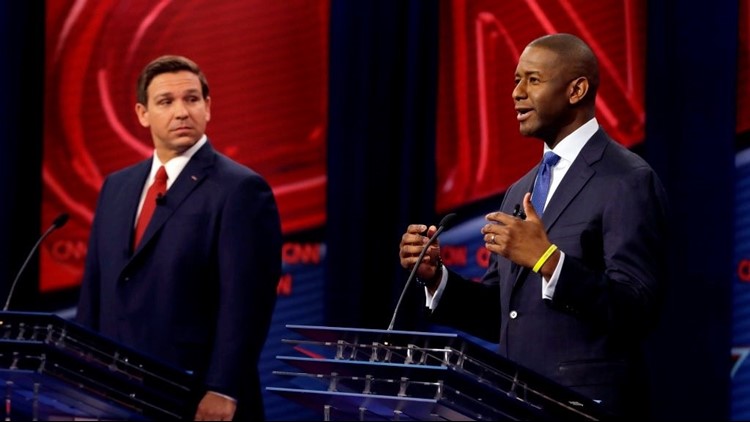TAMPA, Fla. – Florida’s Interstate 4 corridor, 132 miles cutting across the middle of the state, is viewed as the political swing region in the nation’s biggest swing state.
The old saying is “as goes I-4, so goes Florida,” when it comes to determining political outcomes.
Recently retired University of South Florida professor Susan MacManus believes that adage still holds true.
Connecting the Tampa metro area to Orlando to Daytona Beach, voters living in the communities along the I-4 corridor account for nearly half of all registered voters in the state.
“It’s a very, very important bellwether,” MacManus said.
But unlike other areas of the state—like north or southwest Florida where voters are reliably Republican or in the southeast where they’re dependably Democrat—the roughly 5.5 million voters are near evenly split between the two parties, while roughly 1.5 million registered voters are unaffiliated, according to MacManus.
“That’s why you see the candidates here all the time because these are the places where voters can be swayed,” MacManus said.
On Sunday, viewers nationwide tuned into Tampa for the first debate between Florida’s gubernatorial candidates Andrew Gillum and Ron DeSantis. Former Vice President Joe Biden is stumping for Democratic candidates in Tampa and Orlando this week. Last week, DeSantis held a campaign rally in Tampa.
“It’s significant because you get diversity in the age make up. It’s very easy to reach older voters and college students in the same afternoon,” she said. “You also have the three most important geographies of politics: the urban areas, suburban areas, and the rural areas.”
Hillsborough County on its own represents all three political geographies, MacManus joked.
The state’s two largest universities—USF in Tampa and UCF in Orlando—all sit in the corridor.
MacManus believes younger voters will play a major role in shifting the outcome.
“Florida is undergoing a major generational shift—52 percent of Florida’s current registered voters are Gen X-ers, Millennials, and Gen Z-ers,” she said.
“They are going to make a difference. If they don’t vote they’re going to tilt it and if they do vote, in another.”
So does that mean your vote in the I-4 corridor matters more than elsewhere?
MacManus says whether among voters along I-4 or anywhere else in the state, one thing is certain: the margins for victory will be razor thin.
The previous two presidential and gubernatorial races in the state were won by just 1 percent.
►Make it easy to keep up-to-date with more stories like this. Download the 10 News app now.
Have a news tip? Email tips@wtsp.com, visit our Facebook page or Twitter feed.



